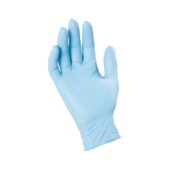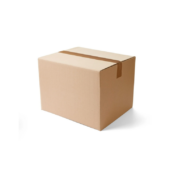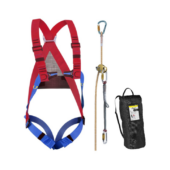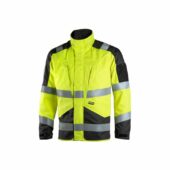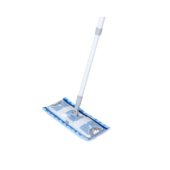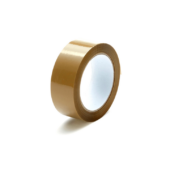When temperatures drop and work demands don’t slow down, staying warm and comfortable in your winter work jacket becomes a top priority.
In this guide, we’ll show you exactly how to layer your workwear to maximize warmth and mobility, ensuring you’re prepared for any winter conditions.
With practical advice from industry experts, you’ll gain all the tools needed to stay productive and comfortable on the job. And when you’re ready for your next challenge, we’ll also guide you on maintaining and upgrading your winter work gear.
To learn more about choosing the best work jackets for winter, check out our comprehensive guide here.
1. Start with a Moisture-Wicking Base Layer

Your base layer is critical for keeping you dry. Sweat can reduce warmth, so a good base layer should wick moisture away from your skin. Avoid cotton, as it absorbs moisture and takes too long to dry. To make your choice easier, here’s a comparison of the best materials for layering:
| Layer | Recommended Material | Pros | Cons |
| Base Layer | Merino Wool | Warm, moisture-wicking | Higher cost |
| Synthetic (Polyester) | Quick-drying, affordable | Retains odor | |
| Mid Layer | Fleece | Lightweight, breathable | Less compact than down |
| Synthetic Insulation | Performs when wet, durable | Heavier than down | |
| Outer Layer | Gore-Tex | Waterproof, windproof | Expensive |
| Polyurethane-coated | Budget-friendly waterproof | Less breathable |
For more details on selecting the right materials for layering, check out this REI layering guide.
2. Add an Insulating Mid Layer
The mid layer traps heat, creating a buffer zone between your body and the cold. The material you choose depends on your activity level and weather conditions.
- Fleece jackets are great for moderate cold and high activity.
- Down or synthetic insulated jackets are better for extreme cold.
- Key feature: Breathability, so you don’t trap sweat.
Pro tip: A mid layer should fit comfortably over your base layer without restricting movement. If you need guidance on insulation types, our article on down vs. synthetic insulation has you covered.
3. Top It Off with a Protective Outer Layer
The outer layer—your winter work jacket—is the first line of defense against the elements. Look for jackets that are:
- Waterproof to keep you dry in snow or rain.
- Windproof to block cold gusts.
- Durable to withstand the demands of your job.
A properly fitted jacket should allow room for your base and mid layers while still offering ease of movement. For options, explore our range of winter work jackets.
Seasonal and Geographic Considerations
Layering needs can vary significantly across Europe due to diverse climates. In Scandinavian winters, where temperatures often drop significantly below freezing, prioritize heavy-duty insulation such as down or synthetic mid-layers and high-performance outer layers with advanced waterproofing like Gore-Tex. In contrast, regions in Southern Europe with milder winters may only require lighter mid-layers such as fleece and water-resistant, breathable outer layers.
Adjust your layers based on expected conditions to avoid unnecessary bulk and maintain comfort, whether you’re working in harsh northern climates or tackling tasks in temperate southern zones.
Layering Tips for Specific Work Conditions
Working in Wet Conditions
- Prioritize waterproof layers.
- Use synthetic insulation for quicker drying.
- Check that seams on your outer jacket are sealed.
Working in Extreme Cold
- Double up on mid layers if needed (e.g., fleece + synthetic insulation).
- Choose a jacket with a high neck and adjustable cuffs to help retain warmth.
High-Activity Jobs
- Opt for lightweight, breathable layers.
- Use vented jackets to avoid overheating.
- Carry an extra base layer to change if you get too sweaty.
Accessories to Complete the Look
Layering doesn’t stop with your jacket. Complement your outfit with:
- Winter work gloves: Ensure dexterity and warmth. Explore options here.
- Winter safety shoes: Keep your feet dry and warm. Find the perfect pair.
- Winter work pants: Add insulation for lower body warmth. Browse selections.
- Winter overalls: Ideal for full-body coverage. Shop here.
Common Mistakes to Avoid
Overdressing
Too many layers can lead to warmth buildup and increased perspiration. Choose breathable fabrics and layer strategically.
Ignoring Fit
Ill-fitting layers can restrict movement and reduce the effectiveness of insulation. Ensure each layer fits comfortably over the previous one.
Neglecting Extremities
Cold hands and feet can affect comfort and focus during tasks. Invest in quality gloves and insulated footwear.
Maintaining Your Layers
- Base layers: Wash frequently to remove sweat and oils.
- Mid layers: Follow care instructions to maintain insulation properties.
- Outer layers: Reapply waterproof treatments as needed to maintain performance.
Proper care extends the lifespan of your gear, ensuring you get the most out of your investment.
Ready to Upgrade Your Winter Work Gear?
We hope this guide has equipped you with the essential strategies for effective layering, from selecting moisture-wicking base layers to finding the perfect winter work jacket. With these tips, you can stay warm, comfortable, and productive throughout the cold months. Explore our curated collection of winter work jackets and other essential gear to ensure you’re fully prepared.
Still have questions or need personalized advice? Our team is here to help you find the right solutions for your workwear needs. And when you’re ready for the next step, don’t miss our expert guides on work pants, overalls, safety shoes, and gloves.
Stay confident and protected in any condition—we’re here to support you every step of the way.
Frequently Asked Questions
If you’re sweating heavily, reduce layers. If you’re feeling chilly or shivering, add more.
Absolutely. Just ensure each layer meets its function—base (moisture-wicking), mid (insulation), and outer (weather protection).
A hoodie can work if it’s not cotton and offers some insulation, but it can get bulky. Opt for a proper mid layer if you need better warmth without the bulk.
Wash, dry thoroughly, and store in a breathable bag or on hangers to maintain loft and insulation.
Yes, if you’re working in very low temperatures without much movement. Otherwise, a solid layering system typically suffices.




